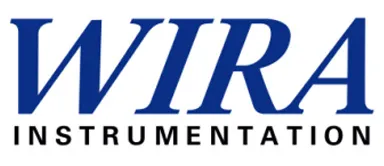Essential Guide to Understanding Universal Tensile Testing Machines for Accurate Material Analysis
 In the realm of material testing, the universal tensile testing machine plays a pivotal role, providing essential data for engineers and researchers to evaluate the mechanical properties of various materials. According to a report by Markets and Markets, the global tensile testing machine market is expected to reach $421 million by 2025, driven by the increasing demand for quality assurance and the rising significance of material testing across diverse industries, including aerospace, automotive, and construction. This guide aims to delve into the intricacies of universal tensile testing machines, exploring their fundamental principles, operational methodologies, and critical applications in ensuring material integrity. By understanding these machines, professionals can enhance their material analysis processes, ultimately leading to improved product development and compliance with industry standards.
In the realm of material testing, the universal tensile testing machine plays a pivotal role, providing essential data for engineers and researchers to evaluate the mechanical properties of various materials. According to a report by Markets and Markets, the global tensile testing machine market is expected to reach $421 million by 2025, driven by the increasing demand for quality assurance and the rising significance of material testing across diverse industries, including aerospace, automotive, and construction. This guide aims to delve into the intricacies of universal tensile testing machines, exploring their fundamental principles, operational methodologies, and critical applications in ensuring material integrity. By understanding these machines, professionals can enhance their material analysis processes, ultimately leading to improved product development and compliance with industry standards.
Key Components of Universal Tensile Testing Machines: A Comprehensive Overview
Universal tensile testing machines are vital in the field of material testing, providing critical insights into the mechanical properties of a wide range of materials. Understanding the key components of these machines is essential for anyone involved in material analysis. The primary device incorporates a load cell, which accurately measures the force applied to the specimen, and a crosshead that moves in response to this force. The precise control of the crosshead speed allows for consistent strain rates, promoting reliable results in tensile tests.
Another crucial element is the grip system, which secures the test sample, ensuring that it remains stationary during testing. Various types of grips, such as wedge grips or pneumatic grips, allow for compatibility with different materials and specimen shapes. Additionally, the extensometers are used to measure the elongation of the specimen under test, providing important data regarding its ductility. Collectively, these components work in unison to deliver precise and repeatable data, making universal tensile testing machines indispensable in research and quality control across multiple industries.

The Importance of Accurate Material Analysis for Industry Applications
Accurate material analysis is crucial in various industry applications, from aerospace and automotive to construction and electronics. According to a report by Market Research Future, the global materials testing equipment market is projected to reach $3.95 billion by 2025, highlighting the growing demand for reliable testing solutions. In particular, universal tensile testing machines play a vital role in determining the tensile strength, elasticity, and ductility of materials, informing engineers and manufacturers about how materials will perform under stress.
In the automotive sector, for instance, the need for high-performance materials has never been greater. The Society of Automotive Engineers (SAE) emphasizes that accurate material analysis can greatly influence vehicle safety and efficiency. A case study showcased that utilizing advanced tensile testing led to a 20% improvement in material selection processes, significantly reducing the risk of material failure during crash tests. Such data underline the necessity of universal tensile testing machines in ensuring that materials meet stringent industry standards and contribute to overall product reliability and safety.
Understanding Different Testing Standards and Their Impact on Results
When conducting tensile tests using universal testing machines, understanding various testing standards is crucial for obtaining reliable and accurate results. Different industries adhere to specific standards such as ASTM, ISO, and EN, each defining unique parameters and protocols that impact the test outcomes. For instance, ASTM D638 is widely recognized for plastics, while ISO 6892 focuses on metals. These standards dictate everything from sample preparation and dimensions to the rate at which the load is applied, emphasizing the importance of compliance to ensure consistency across tests.
Moreover, the impact of these standards on results cannot be overstated. Variations in testing method, including load application rates and environmental conditions, can lead to significantly different mechanical properties, such as yield strength and elongation. Adhering to the correct standard not only enhances the reliability of your results but also facilitates global comparison of material performance. By mastering these testing standards, laboratories and manufacturers can make more informed decisions about material choices and ensure compliance with regulatory requirements, ultimately improving product quality and performance in their respective applications.
Essential Guide to Understanding Universal Tensile Testing Machines for Accurate Material Analysis
| Testing Standard | Sample Type | Maximum Load (kN) | Strain Rate (mm/min) | Elongation at Break (%) |
|---|---|---|---|---|
| ASTM E8 | Metal | 100 | 2 | 20 |
| ISO 6892 | Metal | 250 | 5 | 15 |
| ASTM D638 | Plastic | 50 | 100 | 300 |
| ISO 527 | Plastic | 60 | 50 | 5 |
| ASTM C39 | Concrete | 3000 | 1 | - |
Interpreting Tensile Test Results: Critical Parameters You Should Know
Understanding tensile test results is crucial for accurate material analysis, as these tests offer insights into material properties such as strength, ductility, and elasticity. Among the critical parameters to interpret are yield strength, ultimate tensile strength (UTS), elongation, and reduction of area. According to industry standards set by organizations like ASTM and ISO, the yield strength indicates the stress level at which a material begins to deform plastically. For instance, a tensile test on low-carbon steel typically reveals yield strengths around 250 MPa, while more advanced materials can reach yield points exceeding 1000 MPa.
Tip: Always ensure your tensile testing machine is calibrated regularly to maintain precision in measurements. Even slight discrepancies can lead to misleading results and thus impact the overall analysis.
Another important parameter is elongation, which reflects the material's ductility. It quantifies how much a material can stretch before failing, with values around 20-30% being typical for metals. This parameter plays a vital role in applications where flexibility is crucial, such as in automotive and aerospace components.
Tip: When interpreting elongation data, consider the testing conditions, as temperature and strain rate can significantly influence material behavior. Always document these conditions to ensure accurate comparisons.

Maintenance and Calibration Best Practices for Optimal Testing Accuracy
Regular maintenance and calibration are crucial for ensuring accurate results from universal tensile testing machines. One key tip is to develop a routine maintenance schedule that includes daily, weekly, and monthly checks. Daily checks should involve visual inspections for any signs of wear or damage, especially on critical components like grips and load cells. Weekly intervals should include more detailed examinations, such as tightening loose bolts and ensuring that the machine is properly aligned. Monthly maintenance can focus on lubrication of moving parts and replacing any worn-out elements.
Calibration is equally important in guaranteeing the reliability of your testing results. Always follow the manufacturer's guidelines for calibration procedures, which often includes using certified calibration weights and reference standards. A recommended practice is to perform calibration before critical testing sessions and after any major repairs or adjustments. To maintain optimal testing accuracy, record all calibration results and set reminders for periodic recalibration based on your machine's usage frequency. This process not only ensures compliance with industry standards but also enhances the credibility of your material test results.
Lastly, consider training staff on best practices for both maintenance and calibration. This can significantly reduce the risk of human error and improve overall machine performance. Continuous education on the functioning of the tensile testing machine and any advancements in maintenance techniques will keep your lab at the forefront of material analysis accuracy.
Related Posts
-

How to Choose the Right Temperature Humidity Chamber for Your Specific Testing Needs
-

Essential Checklist for Selecting the Right Temperature Test Chamber for Your Testing Needs
-

How to Choose the Right Force Tester for Your Manufacturing Needs
-

7 Compelling Reasons to Invest in Thermal Chambers for Your Business Success
-

Solutions for Tailored Environmental Test Chamber Applications
-

Choosing the Right Temperature Humidity Chamber: A Comprehensive Comparison Guide
Have Questions? We're Here to Help!
Give us a call at (864) 989-0566 or send us a message to discuss our testing equipment with an expert.












